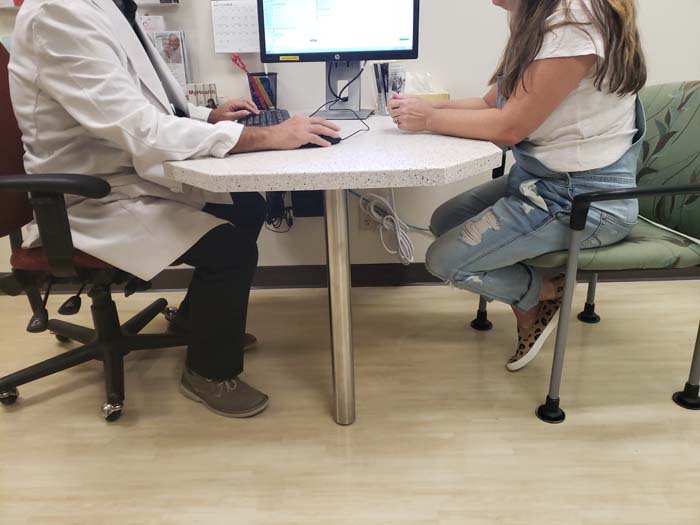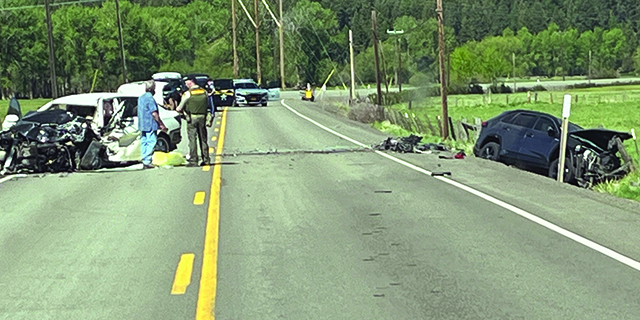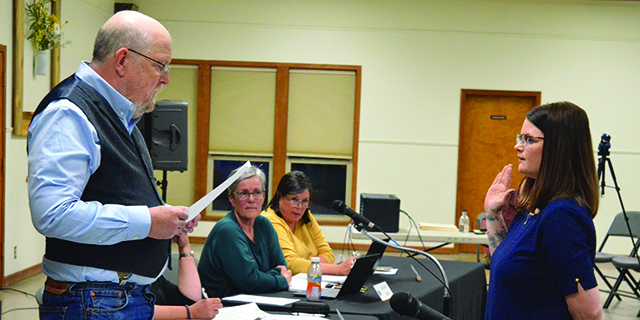GRH honored for use of technology in patient care
Published 10:00 am Friday, September 27, 2019

- A caregiver at Grande Ronde Hospital updates a patient's digital records in 2019. Grande Ronde Hospital and Clinics earned recognition in a pair of categories on the 2022 Digital Health Most Wired Survey, the fifth time since 2016 the hospital has been recognized.
By Sabrina Thompson
The Observer
Grande Ronde Hospital was awarded the Most Wired award by the College of Healthcare Information Management Executives for 2019 for the integration of technology into its systems. GRH is a level 7, which means it uses technology to help analyze patient trends in addition to creating more effective and efficient care for patients.
In 2018, the hospital changed its operating system to become more digitized with a patient-centered focus. This shift allowed for a person’s records to be viewable from any department in the hospital and included a new patient portal called MyChart. The Most Wired award is evidence of the success of the new system.
According to GRH’s chief information officer, Parhez Sattar, not every hospital uses technology, and health care is one of the slowest types of services to adopt it, as it is more focused on human interaction.
“However, information technology helps you (deliver health care) more effectively and efficiently because you have information at your fingertips rather than having to chase it down,” Sattar said.
One area CHIME looked at in GRH’s integration of technology is how the organization protects patient data from breaches while sharing the information within the hospital.
“It’s really the patient’s data. We are merely the custodians of it,” Sattar said. “They gave us the honor to take care of their health and information so that we can be more informed in the process of taking care of them.”
According to Sattar, the hospital has many layers of protection and firewall in place to prevent a data breach, and to this date, he said, it has never had one. He said that while providers may find it difficult at times to go through the extensive protective measures, they understand the inconvenience is worth it.
While providers are willing to be inconvenienced, GRH’s goal is to make the process of health care more convenient for patients. With the MyChart portal, patients can be more engaged in their health care management. The portal allows them to schedule appointments, refill certain prescriptions and correspond with their doctors about non-emergency questions and concerns.
For Sattar, this means the hospital’s goal of patient engagement is being achieved. Sattar said the best care is provided when there is a balance of technology integration and old-school human interaction.
“The more engagement you have, the more efficient the outcome will be,” Sattar said.
Sattar said right now GRH is working to find a balance between integrating the use of technology and working with providers and patients who are not as comfortable with it. Non-digital communication is still available for those who may not want to use the portal. Patients may call or visit their providers for all their health care needs. Sattar said the hospital is proud to provide both.
Another benefit of being a “wired” hospital that Sattar identified is having the ability to collect and analyze data. Rather than relying on their memory alone, providers can see the data for effective treatments. This includes looking at trends of what treatments have worked in the past, what the current illnesses are within the community and predicting changes that may occur in the future with proper adjustments in patient care.
“It’s not just hindsight, but insight into what is working and foresight into what may work in the future,” Sattar said.
When looking at the detailed score from CHIME for the award, Sattar was able to identify improvements that can still be made in GRH’s use of technology. According to Sattar, in some areas, although the technology exists, there is a combination of factors preventing the hospital from fully implementing it, including the financial cost as well as the comfort levels of both patients and providers.





